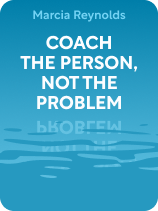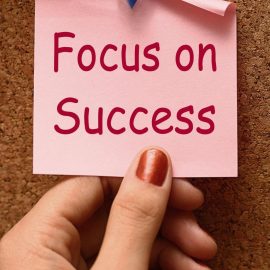

This article is an excerpt from the Shortform book guide to "Coach the Person, Not the Problem" by Marcia Reynolds. Shortform has the world's best summaries and analyses of books you should be reading.
Like this article? Sign up for a free trial here.
What are the core life coaching skills? How can you do your job more effectively by learning these skills?
In Coach the Person, Not the Problem, Marcia Reynolds describes the most important life coaching skills that separate the great from the good. According to her, there are two core skills every life coach should learn to be successful in their field.
Read on to learn the two life coaching skills you should master as a coach, according to Reynolds.
Required Life Coaching Skills
According to Marcia Reynolds, coaching is a partnership aimed at helping clients root out underlying reasons for why they feel stuck and helping them to move forward in their professional or personal lives. A coach’s role is to support clients in a deep investigative process to identify and challenge assumptions that underlie their beliefs and limit their progress—not be an expert who doles out advice or solves clients’ problems from on high. She says that coaches view clients as capable of making change when given the proper support and tools. As you prepare to coach, you should be attuned to two life coaching skills that will help you do your job more effectively: Being in the correct mental state and being an active, empathic listener.
Skill 1: Be in the Correct Mental State
Reynolds says that strong coaches are fully “in the moment” in their sessions. This means a) being constantly attuned to what your client is experiencing, what you’re experiencing, and the dynamic between you and b) allowing and welcoming whatever arises in your session to unfold organically. Being in the moment allows you to meaningfully connect with your client and fosters an atmosphere that encourages them to be open.
(Shortform note: Experts expand upon Reynolds’s recommendation to be mindful of your client’s and your individual and shared experience, asserting that when you “hold space” for your client, yourself, and the coaching process, you build a vital three-way partnership. Holding space means taking the time to honor and reflect upon your client’s work without attachment or the feeling that you have to rush their—or your—process to fit a particular coaching model. By giving your client and yourself the space necessary to reflect together, you show respect for and strengthen your journey together.)
For this life coaching skill, Reynolds says you can learn to be in the moment during each coaching session by consciously reminding yourself to:
- Choose one or two emotions that will best serve your client and keep you focused and present. For example, if your client is temperamentally anxious and negative, you might choose to be calm and positive.
- Be a partner who sees your client’s strengths.
Choosing your emotions and focusing on what your client brings to the table will keep you, and them, in a balanced, open state that’s conducive to learning, understanding, and growth.
(Shortform note: Existential-Humanistic (EH) therapy takes a similar approach to the mindful work that Reynolds advocates for in coaching. A core practice of EH therapists—who believe in the inherent worth of all clients, including those deemed too wounded to heal—is being fully engaged in the present moment during sessions. One way they do this is by embracing silence unless or until they or their client have something relevant to offer, which encourages a deeper focus on clients’ immediate experience. EH therapists strive to remain present as clients work through the unknown to greater clarity, trusting that the necessary answers will reveal themselves through revelations that arise in the moment.)
Reynolds says that when you find your mind wandering during sessions, you can recenter yourself and connect with your physical body by releasing tension from areas where you feel it. For example, relax your shoulders or unclench your fists or jaw. You can also draw your attention to details of objects immediately in front of you. For example, notice the shape and color of the leaves on a plant in the room, or study the pattern on the rug at your feet. If you find your mind wandering, think to yourself, “Ah, my mind’s wandering,” then return to noticing the physical objects in front of you.
(Shortform note: Experts say that staying focused on the subject at hand is an important skill not just for life coaches, but for clients. Clients can avoid becoming distracted during sessions by taking a minute to be still before each meeting, turning off their phones, and taking notes on paper. They can also practice being present in their day-to-day life, which will carry into their coaching sessions. Some practices to improve this include putting your hands in water and focusing on how it feels on your fingertips and palms, picking up and noticing the weight and size of different objects, and holding a piece of ice and thinking about how it feels as it melts.)

———End of Preview———
Like what you just read? Read the rest of the world's best book summary and analysis of Marcia Reynolds's "Coach the Person, Not the Problem" at Shortform.
Here's what you'll find in our full Coach the Person, Not the Problem summary:
- The mindsets and skills required of clients and coaches to work together effectively
- The four practices coaches should employ to make the most of coaching sessions
- Why the role of a coach is not to fix surface-level problems






